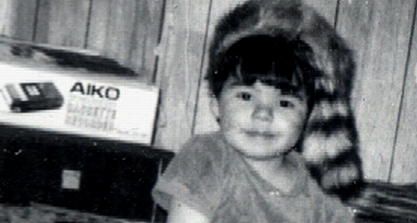The vast city - which is five miles long and two miles wide - is believed to predate the oldest known remains in the subcontinent by more than 5,000 years.
The site was discovered by chance last year by oceanographers from India's National Institute of Ocean Technology conducting a survey of pollution.
Pot sherds ("Late Woodland" fabric-impressed; 150-700'ish years old) and flint flakes (from stone-tool manufacture) collected from the surface of the Rainy River shoreline.

Collections of Native American legends are available at
Sacred-Texts .Com. Some of the texts that I looked at were published at the turn of the twentieth-century, but there may be older pieces.
From: Myths and Legends of the Sioux - by McLaughlin, Marie L. (1916):
THE FORGOTTEN EAR OF CORN
An Arikara woman was once gathering corn from the field to store away for winter use. She passed from stalk to stalk, tearing off the ears and dropping them into her folded robe. When all was gathered she started to go, when she heard a faint voice, like a child's, weeping and calling:
"Oh, do not leave me! Do not go away without me."
The woman was astonished. "What child can that be?" she asked herself. "What babe can be lost in the cornfield?"
She set down her robe in which she had tied up her corn, and went back to search; but she found nothing.
As she started away she heard the voice again:
"Oh, do not leave me. Do not go away without me."
She searched for a long time. At last in one corner of the field, hidden under the leaves of the stalks, she found one little ear of corn. This it was that had been crying, and this is why all Indian women have since garnered their corn crop very carefully, so that the succulent food product should not even to the last small nubbin be neglected or wasted, and thus displease the Great Mystery.
I can't help but think that the original version of the story was probably longer and more involved. The site also archives stories of other cultures and faiths from around the world.
I ran into another Native-News website, First Perspective; incorporating the resources of two publications:
The First Perspective (National News) and The Drum (Manitoba & North West Ontarion News) are published together monthly by Taiga Communications Inc. at Brokenhead First Nation, Scanterbury, Manitoba.
Taiga Communications is politically independent and is Aboriginal owned and operated. Our publications are indexed in the Canadian Periodical Index and they are available on-line at www.firstperspective.ca and www.manitobadrum.com.
One of the many First Nation/Native American artists and poets that I had the honour to meet in Minneapolis was Jamison Mahto. I was fortunate to hear him perform his epic Blues For Franklin Avenue at a cafe in Northeast Mpls. - and I've hung onto this little book for the last ten+ years.
I had heard of him and the poem, much before, however; people spoke of him in the way people speak of cherished characters who go deliberately missing; "He'll show up... eventually".
*If anybody knows where he is, now, can you have him send me an email. Thanks. :Eric
[brokenvultureart@gmail.com]
Cover page - Blues For Franklin Avenue - Copyright: Jamison Mahto

Inside cover pages - Blues For Franklin Avenue


Page 1(out of 5) - Blues For Franklin Avenue Click to read larger version; all pics click to enlarge.

Tags:


2 comments:
i saw jameson read this poem at the viking when tin ear was hosting readings there in the early nineties. pretty good readings. i remember shelly or someother bartender freaking out becuse the poets kept saying words like fuck into the microphone.
I can see Shelley doing that. I missed out on the Viqueen readings
Post a Comment